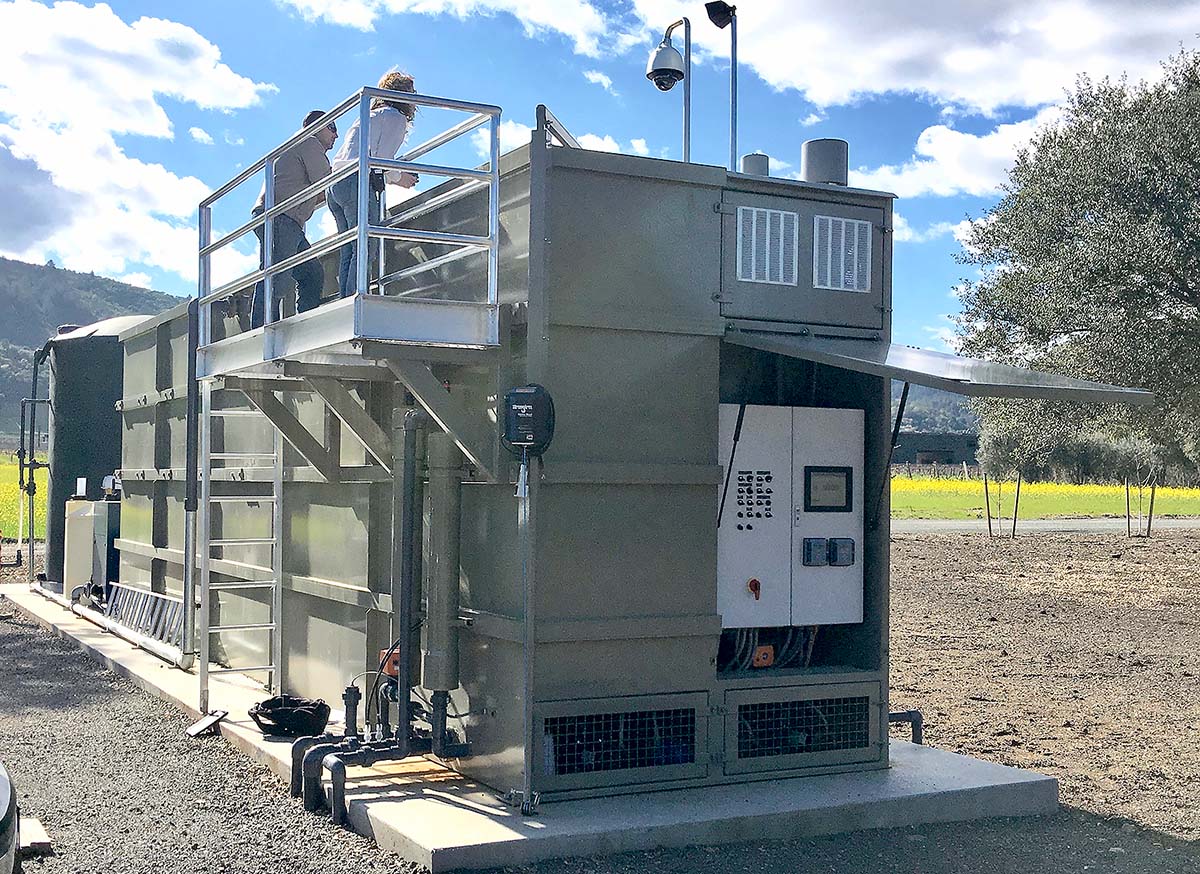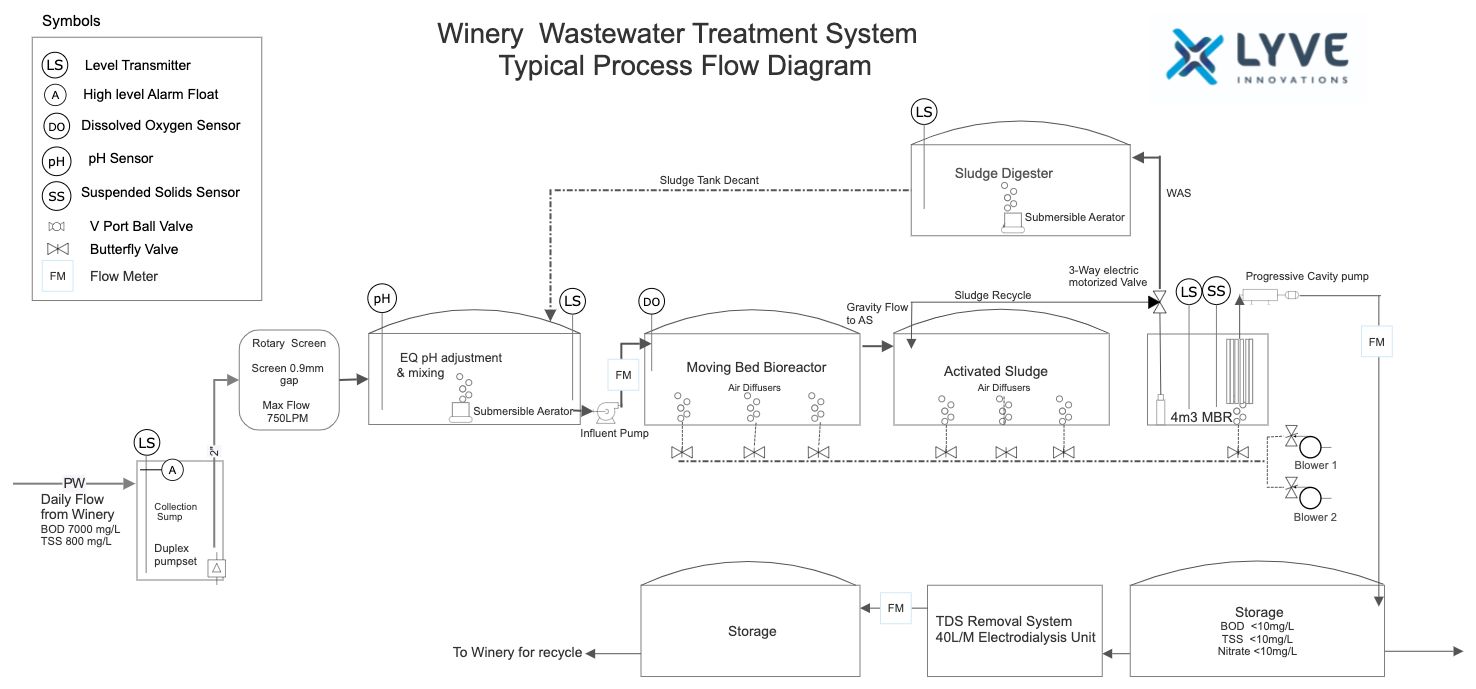Wastewater Treatment
Flexibility and Versatility
Lyve Innovations offers custom designed wastewater treatment systems for any size winery. Our flexibility and versatility allows each system to be uniquely designed to meet the treatment requirements as well as the aesthetic and site needs of the winery
Our scalable, smart systems ensure efficient water reuse for irrigation, while reducing environmental impact. With a focus on sustainability and cost-effectiveness, our systems are designed to meet your unique needs, treating combined wastewater streams and minimising ownership expenses.

The Wastewater Process
Wastewater produced in winemaking facilities contains mainly soluble sugars and ethanol associated with the wine. These “contaminants” are dissolved into the water and cannot be separated by mechanical means. The Lyve Innovations system uses naturally occurring bacteria to break down these compounds.
The first step of the treatment process involves screening the wastewater using a rotary screen, with mesh sizes of 0.5 – 1.0 mm, to remove coarse solids.
After screening, an equalisation tank, with the capacity to hold at least one peak day’s wastewater production, buffers the hydraulic and contaminant load surges and allows the pH to balance to some extent. A pH monitoring system adjusts the pH when required to maintain a pH value between 6.5 and 8.5.
The heart of the Lyve Innovations system is the Moving Bed Biofilm Reactor (MBBR), where ideal conditions are maintained for bacteria to proliferate. It’s in the MBBR where the bacteria metabolise the dissolved compounds as the wastewater flows through. Blowers are used to supply air to a medium bubble air diffusion system within the MBBR to provide the closely monitored dissolved oxygen levels to satisfy the bacteria’s respiration requirements. Nutrient levels are also maintained to ensure the bacteria maintain the required ammonia nitrogen and phosphate for enzyme production and growth.
Under these ideal and managed conditions, the bacteria produce a gel-like substance that allows them to agglomerate and form “flocs”. These flocs are bound clusters of bacteria which also gather fine inert particles that we refer to as suspended solids.
The final stage of the secondary treatment process is the Membrane Bio Reactor (MBR) for final polishing and solids separation prior to storage or tertiary treatment. Once the bulk of the removal of the BOD is completed by the previous treatment stages, the mixed liquor suspended solids (MLSS) overflows in to the MBR. The MBR contains submerged hollow fibre membranes with a pore size of 0.04 microns to physically separate the suspended solids from the wastewater, producing a high-quality treated effluent.
The membranes require constant aeration to transport solids, that could cause fouling, away from the membrane surface. The membranes have a built-in air manifold that transfers air to a course bubble diffuser located at the bottom of the cassette with air supplied by a blower. To limit the build-up of the solids, keeping the MBR at peak performance, the accumulating solids will be returned (RAS) to the Activated Sludge Aeration Basin or wasted (WAS) to the Sludge Digester where ultimately they can be dewatered and the solids used for compost.
A permeate pump will pull the mixed liquor through the membranes, sending the clean effluent to the Effluent Storage Tank.
Independent Winery Wastewater Treatment Consultancy
With our 40+ years combined experience in designing, manufacturing, installing and operating winery wastewater treatment systems, Wayne and Ryan understand the site-specific requirements that every winery needs to consider when choosing a wastewater treatment system. We also appreciate the environmental factors, aesthetic impacts and challenges that our clients face.
Ready to revolutionise your winery's wastewater management?
Benefit from our experience. Reuse water efficiently, cut costs, and embrace eco-friendly solutions. With options to treat combined process and wastewater streams smartly, contact Lyve Innovations today and step into a greener future for your winery!
